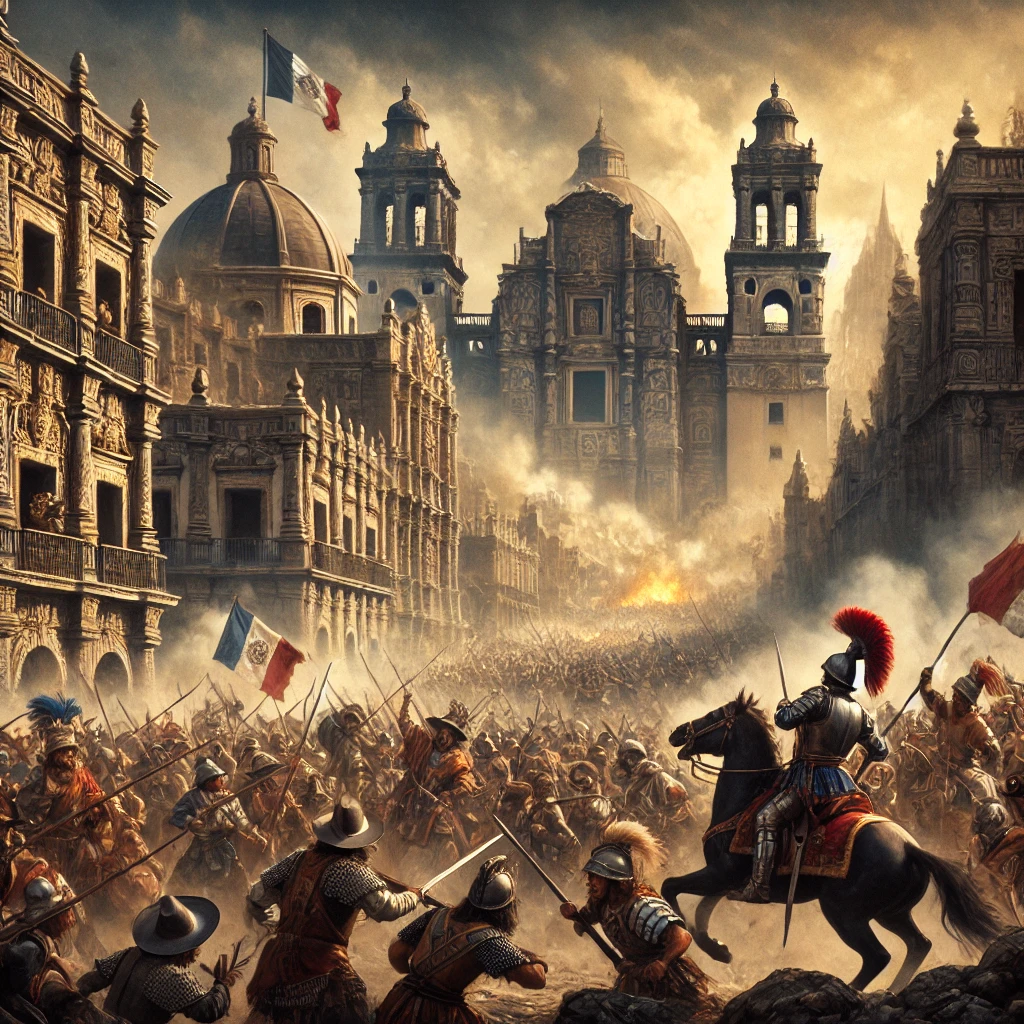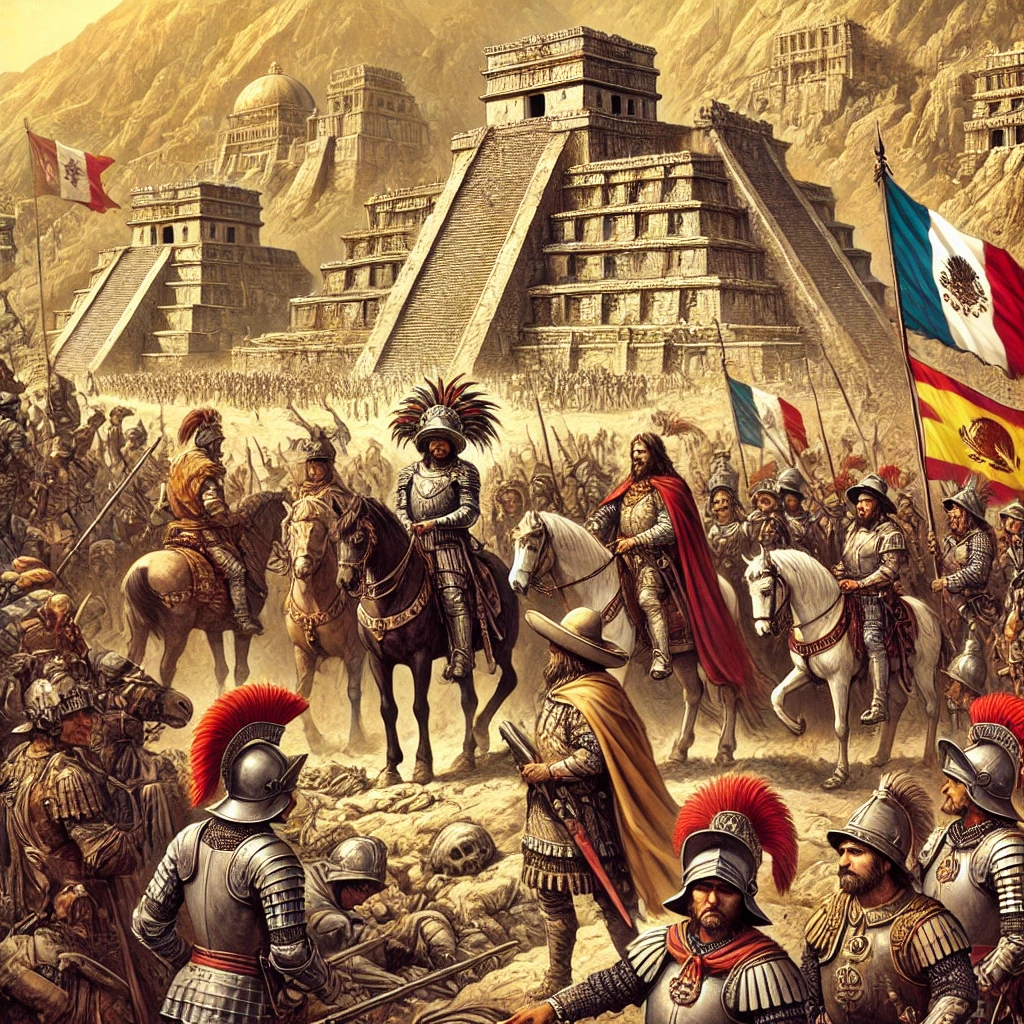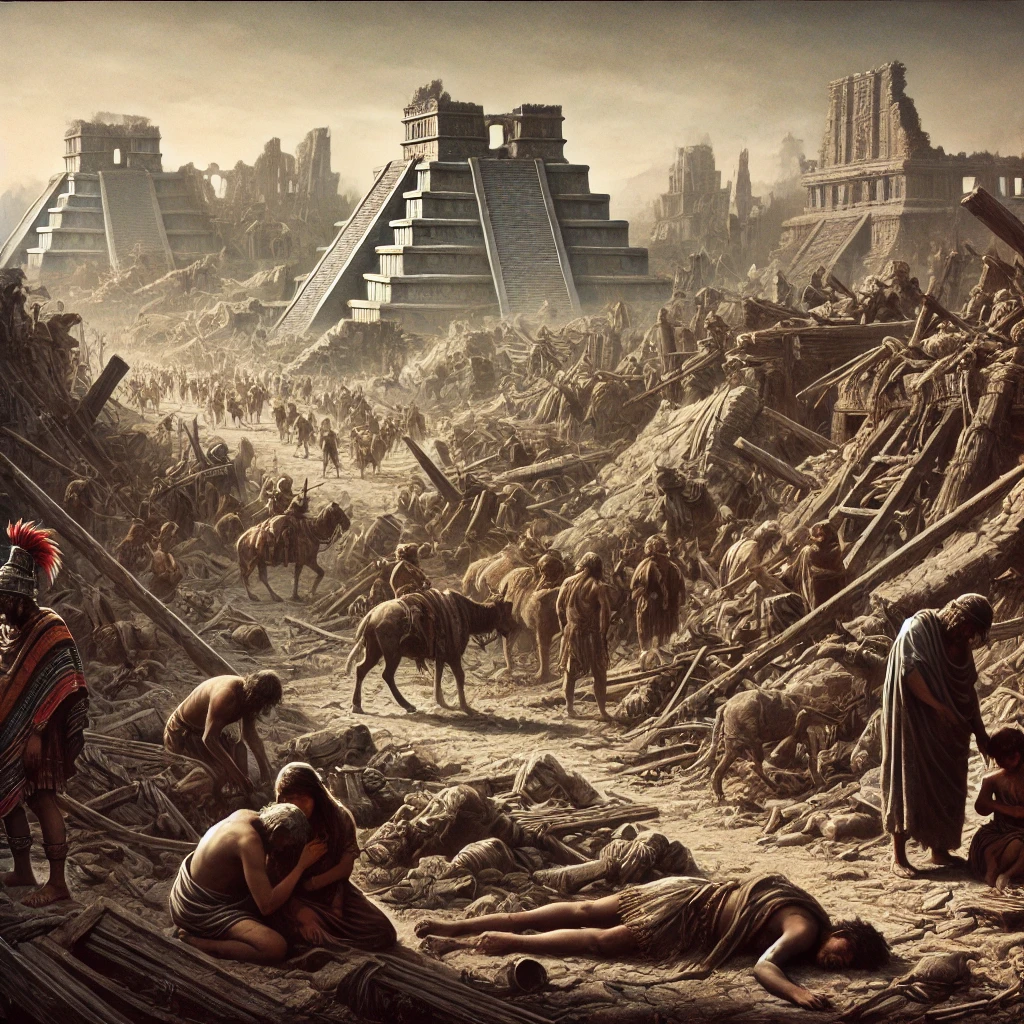On August 13, 1521, the Aztec capital city of Tenochtitlán fell to the forces of Spanish conquistador Hernán Cortés, marking a significant turning point in the history of the Americas. The fall of Tenochtitlán signaled the end of the powerful Aztec Empire and the beginning of Spanish colonization in Mexico. Cortés’s conquest was the culmination of a prolonged siege and a series of strategic maneuvers that ultimately led to the downfall of one of the most sophisticated and formidable civilizations in pre-Columbian America.
The conquest of Tenochtitlán was a result of both military engagement and political alliances. Cortés, who had initially arrived in Mexico in 1519, formed alliances with various indigenous groups who were hostile to the Aztecs. These alliances, combined with the Spanish military’s superior weaponry and tactics, played a crucial role in the eventual capture of the city. The siege of Tenochtitlán lasted for several months, with the Spanish forces eventually breaching the city’s defenses and overwhelming its inhabitants.

The Siege and Surrender
The siege of Tenochtitlán was a grueling and destructive campaign that saw significant suffering for both the Aztec people and their Spanish adversaries. The Spanish forces, aided by their indigenous allies, cut off the city’s supplies and water sources, creating severe shortages that contributed to the city’s eventual surrender. The combination of starvation, disease, and relentless attacks weakened the Aztec defenses and led to a final, decisive confrontation.
The fall of Tenochtitlán was marked by intense fighting and significant destruction. The Spanish troops, led by Cortés, faced fierce resistance from the Aztec defenders, but the overwhelming force and strategic advantages ultimately led to the city’s collapse. The surrender of the Aztec emperor Cuauhtémoc marked the end of the siege and the beginning of a new era in Mexican history.

The Aftermath and Historical Impact
The fall of Tenochtitlán had profound and far-reaching effects on the history of Mexico and the broader Americas. Following the conquest, the Spanish established their colonial capital on the ruins of Tenochtitlán, which would become Mexico City. The fall of the Aztec Empire paved the way for Spanish colonization and the eventual establishment of a vast Spanish empire in the Americas.
The impact of the conquest on the indigenous populations was severe, leading to widespread disruption, cultural loss, and demographic changes due to disease and conflict. The Spanish imposed their own systems of governance, religion, and culture, significantly altering the social and political landscape of the region. The fall of Tenochtitlán remains a pivotal moment in the history of European colonization and its complex and often tragic interactions with indigenous peoples.

The capture of Tenochtitlán on August 13, 1521, represents a defining moment in world history. The event not only marked the end of the Aztec Empire but also set the stage for the expansive era of European colonization in the Americas. The legacy of this conquest continues to influence historical narratives and cultural identities in Mexico and beyond, reflecting the profound changes wrought by this monumental event.
